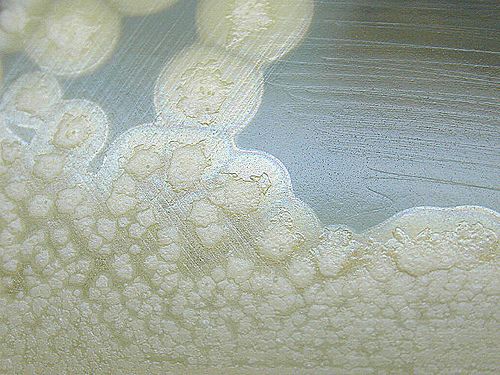-
 Van Allen belts
Van Allen belts
-
 Magnetic field
Magnetic field
-
 Ductus arteriosus
Ductus arteriosus
-
 Embodied energy
Embodied energy
-
 Bit
Bit
-
 Rectrice
Rectrice
-
 Pollution snow
Pollution snow
-
 Tadelakt
Tadelakt
-
 Myeloid
Myeloid
-
 Big Rip
Big Rip
-
 Fossils
Fossils
-
 Nadir
Nadir
-
 Essential nutrient
Essential nutrient
-
 Gravitational wave
Gravitational wave
-
 Eruptive
Eruptive
-
 Bonding
Bonding
-
 FPS
FPS
-
 Nutricline
Nutricline
-
 Sedimentation
Sedimentation
-
 Black drop
Black drop
-
 Chlamydia
Chlamydia
-
 Stoma
Stoma
-
 Osteosarcoma
Osteosarcoma
-
 Residual error rate
Residual error rate
-
 Osmosis
Osmosis
-
 Keplerian orbit
Keplerian orbit
-
 Newbie
Newbie
-
 Secure channel
Secure channel
-
 Vaginal examination
Vaginal examination
-
 Apodiformes
Apodiformes
Clostridium botulinum
Clostridium botulinum is the bacterium responsible for botulism.
Characteristics of Clostridium botulinum
Clostridium botulinum is a mobile Gram positive, rod-shaped bacterium approximately 1 micrometer wide and 5 micrometers long. Its genome consists of a four million base pairs chromosome coding for 3,500 proteins including the toxins.
Spores of the bacterium are found widely in earth and even in the gastro-intestinal tract of animals from where it spreads. The spores are resistant to heat and germinate under anaerobic conditions.
Clostridium botulinum and botulism
There are seven types of botulism (A to F) depending on the toxin involved. The toxins which are pathogenic to human beings (A, B, E, and occasionally C and F) resemble tetanus toxin and act by inhibiting neurotransmission of the signal at the neuromuscular junction. This causes progressive paralysis of all the affected person's muscles.
In contrast to the spore-forming form of the bacterium, the toxin is not heat-resistant. Contamination can therefore be avoided by heating foods.
Botulinum toxin is the most potent toxin in the world but it is also used in cosmetic medicine to remove wrinkles (botox).
 Clostridium botulinum produces toxins responsible for botulism. © hukuzatuna, Flickr, CC by-nc-nd 2.0
Clostridium botulinum produces toxins responsible for botulism. © hukuzatuna, Flickr, CC by-nc-nd 2.0
Latest
Fill out my online form.



